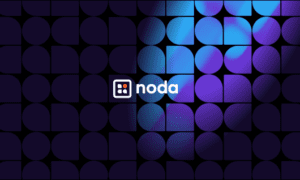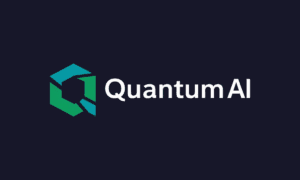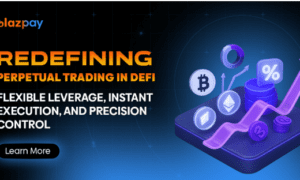Let’s put this plainly—ranking on Google today is no longer about outsmarting the system. It’s about aligning with it. And the system has evolved. Gone are the days when stuffing a few keywords and buying some backlinks could shoot you to the top. Modern algorithms are more intuitive, more demanding, and less forgiving. As a Charlotte SEO agency, we’ve watched these changes roll in like software patches—except your entire business depends on staying compatible.
What did we learn? Google doesn’t reward tricks. It rewards signals. Not signals like waving flags, but ranking signals—hundreds of them, each telling the search engine something about your relevance, authority, speed, clarity, structure, or trustworthiness. Businesses that chase shortcuts tend to fall into obscurity the moment the next update hits. The winners are those who build according to what the algorithm wants.
So how do you know what it wants? That’s where most companies freeze. But don’t worry—we’re breaking it down. In this article, we’ll take you inside the real-world strategies a Charlotte SEO agency like ours uses to satisfy Google’s ever-growing appetite for quality and structure.
Relevance Isn’t Optional—It’s the First Filter
One of the most misunderstood SEO concepts is relevance. Not just having the right keywords, but having the right content that answers the right questions in the proper context. This is where many businesses lose their way. They focus on what they want to say, not what users are searching for—and Google knows the difference.
Relevance is determined by matching user intent to the depth and structure of your content. If someone searches “best Italian restaurant in Charlotte,” Google isn’t going to serve them a homepage with a keyword jammed in the footer. It will serve a page that reads like a local expert guide, includes rich data (such as ratings or reviews), and completely satisfies the question. Algorithms now cross-check your content with top-ranking documents across the web. If your page isn’t competitive in structure or usefulness, it’s filtered out instantly.
The same goes for outdated content. If you’re still targeting terms from 2017, Google can spot that too—language changes, user behavior evolves, and “relevance” is always a moving target. A competent SEO agency isn’t writing for algorithms; it’s writing for people the algorithm listens to. That’s the nuance, and that’s the baseline in 2025.
What Charlotte Businesses in North Carolina Need to Understand First
Businesses in North Carolina—and Charlotte in particular—are competing in a rapidly evolving SEO environment where regional signals are just as important as global trends. Local relevance, geographical tagging, and proximity-based results are no longer secondary elements—they’re baked into the core of how Google delivers answers. However, many business owners don’t realize that the way their site performs in Charlotte might look completely different from how it appears in Raleigh, Asheville, or even just across county lines.
A seasoned Charlotte SEO agency knows that proximity isn’t just about address—it’s about digital footprints. Google tracks user behavior patterns, interaction histories, and even clickstream data to determine whether your business is a good fit for this location. This means your site structure, schema markup, and even internal linking need to support local visibility, beyond simply including your zip code in the footer.
What works in North Carolina often differs from what works in larger cities, such as New York or Los Angeles. Here, local trust matters more. Regional backlinks carry more weight. And content that reflects Charlotte-specific culture, events, or problems naturally outranks generic “nationwide” boilerplate. SEO isn’t just technical—it’s cultural, especially in a state where community plays such a central role in consumer choice.
The Core Ranking Signals You Should Care About in 2025
If you’re still working off an SEO checklist from five years ago, you’re already behind. The algorithm has shifted dramatically, but these signals remain at the core of how your site is evaluated:
- Content Quality & Intent Match – Not just “good writing,” but direct alignment with searcher expectations, depth of topic coverage, and helpful formatting (headings, FAQs, etc.).
- Page Speed & Core Web Vitals – Google measures performance down to milliseconds, especially Largest Contentful Paint (LCP), Interaction to Next Paint (INP), and Cumulative Layout Shift (CLS).
- Structured Data & Schema – Pages with schema markup for articles, reviews, events, or local businesses are easier for bots to interpret and rank appropriately.
- Mobile Usability – Your mobile layout isn’t a side project; it’s your main storefront. Anything complicated to tap, slow to load, or overcluttered will negatively impact rankings.
- Internal Linking & Site Architecture – The way you guide bots (and users) through your content tells Google how vital a page is and how it relates to others.
- Topical Authority – Google increasingly ranks domains that cover an entire subject deeply instead of just one shallow post per keyword.
Staying current means embracing technical SEO, UX design, content marketing, and analytics as one unified effort. That’s not something most business owners can—or should—handle alone. Which is why working with a Charlotte SEO agency is often the difference between showing up and vanishing into page two.
Why Content Design Matters More Than You Think
Most people think “content” means words on a page. But Google doesn’t just read—it evaluates how you present that content. Clean HTML, semantic headings, short paragraphs, and intelligent image usage all matter. If your blog post reads like a wall of text or your mobile layout is a pinch-and-zoom nightmare, that’s not a minor design problem—it’s a signal that you’re not providing a great user experience.
A common mistake we see is businesses hiring a developer and a copywriter separately, without ever aligning the two. So, you end up with fast-loading pages that say nothing helpful, or great content trapped in a broken template. The algorithm sees the disconnection. Bounce rates go up. Session time goes down. Rankings plummet. The structure of your content—how it’s arranged, navigated, and visually consumed—is now inseparable from how it ranks.
This is why many modern SEO strategies begin with a content audit, rather than just a keyword audit. We’ve worked with clients who had thousands of words of content that were simply buried under poor hierarchy or bloated page builders. Once restructured, the duplicate content performed exponentially better. Google needs your content to be clear, clean, and consumable—not just clever.
What North Carolina Clients Are Getting Right (and Wrong)

In North Carolina, there’s no shortage of ambition—but sometimes too much trust is placed in outdated tactics or “SEO experts” who operate on autopilot. We’ve seen businesses spend months trying to rank by changing H1 tags and title lengths, while ignoring page speed, technical errors, or the fact that their pages don’t even align with user intent. That’s not strategy—it’s superstition.
What successful clients in North Carolina are doing right is this: they’re treating SEO like a real investment. Not a magical checkbox, but a continuous process. They’re open to site audits, UX changes, and long-form content strategies. They understand that Google doesn’t owe anyone traffic—it rewards clarity, consistency, and quality. And most importantly, they value local expertise, not outsourced guesswork.
Partnering with a seasoned Charlotte SEO agency gives North Carolina businesses the insight and hands-on strategy they need to compete—not just locally, but statewide and beyond. The algorithm isn’t looking for perfect sites. It’s looking for signals. And you don’t need to be a data scientist to understand them—you just need the right partner to decode them with you.
The Robots Are Watching—And So Are the Users
Let’s discuss crawlability—the most often overlooked element in modern SEO. If Googlebot can’t access or interpret your site structure efficiently, your content may as well not exist. The algorithm prioritizes pages that are easy to scan, easy to index, and interconnected with purpose. This doesn’t mean just having a sitemap.xml file (although that helps). It means intelligent internal linking, clean code, and avoiding things like orphan pages or JavaScript-heavy menus that bots can’t follow.
But it’s not just about what the robots see. Google increasingly simulates user behavior. How visitors interact with your pages—click-through rate, bounce rate, scroll depth, engagement time—feeds directly back into the algorithm. A page that checks all the “SEO” boxes but repels users will quietly sink, update after update. That’s why user behavior metrics are now practically indistinguishable from ranking signals.
If you’re publishing content behind annoying popups, auto-playing videos, or pointless intro screens, you’re not just irritating users—you’re giving the algorithm reasons to move on. Balancing UX with SEO isn’t optional anymore; it’s the whole game. And it’s one that most Charlotte businesses need guidance on—not just plugins and page builders, but architectural clarity.
What Google Loved Then vs. What Google Loves Now
To truly understand the evolution of modern SEO, it is helpful to see how priorities have shifted. Below is a direct comparison of how key ranking signals have transformed over the last decade:
| Ranking Factor | Then (Pre-2015) | Now (2025) |
| Keywords | Exact match in titles and content | Semantic relevance, search intent match |
| Backlinks | Quantity mattered more | Quality, topical relevance, and source trust are critical |
| Mobile Optimization | Nice-to-have | Mandatory: Google indexes the mobile version first |
| Page Speed | Measured in seconds | Measured in milliseconds with Core Web Vitals |
| Content Length | Longer = better | Relevance > Length, depends on query type |
| User Behavior | Minimal influence | Click-through rate, bounce rate, and engagement are key ranking inputs |
| Schema Markup | Rarely used | Essential for visibility (rich snippets, local packs, etc.) |
| Site Structure | Flat, minimal categorization | Organized, hierarchical, context-rich |
| AI & NLP Understanding | Keyword-centric interpretations | Context-aware understanding (BERT, MUM, SGE) |
Understanding this evolution is crucial for any business trying to future-proof its SEO. Agencies still stuck in 2013 tactics are doing more harm than good. Charlotte businesses deserve better than keyword-stuffing and “spray-and-pray” backlink blasts. They need partners who understand where search is headed, not where it has been.
Why Some Agencies Still Get SEO Wrong
Let’s be blunt: the SEO industry is still flooded with snake oil. Agencies that promise instant rankings, “guaranteed” first-page spots, or thousands of backlinks for $99 are working with a strategy best described as wishful malpractice. These tactics might produce a temporary bump—if you’re lucky—but usually result in long-term penalties or flatline performance.
What’s often missing is actual strategy. SEO isn’t a magic spell. It’s the result of research, technical setup, content mapping, monitoring, and iteration. Without ongoing audits, regular content updates, and alignment with changing ranking factors, even well-built sites begin to slide down the SERPs. And if your agency isn’t staying ahead of updates like Google’s Core Web Vitals or the Search Generative Experience (SGE), you’re probably already behind.
Charlotte businesses don’t need promises. They need performance—and transparency. Any SEO agency worth hiring should be able to show what they’re doing, why they’re doing it, and how it’s being measured. If the conversation never moves beyond keywords and backlinks, you’re being underserved.
How Charlotte Businesses in North Carolina Can Use SEO to Scale Intelligently
North Carolina companies, especially those in Charlotte, have a unique opportunity. The business ecosystem is growing, competition is intense, and the demand for local services is high. But that also means your online presence can’t afford to be static. Innovative businesses in the region are now viewing SEO not just as a marketing tool, but as an essential part of their infrastructure. It’s the highway system for your digital visibility.
Unlike paid ads, which disappear the moment you stop paying, SEO builds compounding value over time. A single well-ranked blog post can generate leads for years. A properly optimized service page can serve as your 24/7 sales representative, without ever needing to take time off. And in a local market like Charlotte, small technical details—like how your Google Business Profile syncs with your site content—can make or break your visibility in the map pack.
Above all, North Carolina businesses need SEO partners who understand the state’s diverse markets—urban, rural, and hybrid. Ranking for “Charlotte HVAC repair” isn’t the same as ranking for “Greensboro AC installation,” even if the services are similar. Local signals, regional language, and community backlinks matter. This is where a Charlotte SEO agency like Above Bits becomes not just helpful—but essential.
What the Algorithm Will Want Next (and How to Stay Ready)

You can never fully predict the future of SEO, but you can anticipate its trajectory. Google continues to emphasize user-centric design, AI-powered understanding, and transparency in content. The “search journey” is becoming less about ten blue links and more about immersive results—videos, reviews, snippets, shopping carousels, and now, AI-generated summaries. Your job is to be present and structured throughout it all.
This means embracing multi-format content, improving technical SEO hygiene, and constantly refining your site’s architecture based on how users (and bots) behave. It also means creating content that doesn’t just answer a query—but anticipates follow-ups, related questions, and decision-making friction. The more holistically you serve the user, the more favorably you’re seen by the algorithm.
Working with a high-level SEO team isn’t a luxury—it’s a shortcut to avoiding months (or years) of guessing. While other businesses are reacting to every update in panic, you’ll be adjusting with clarity and purpose. Once you understand what the algorithm wants, the question shifts from “How do I rank?” to “What should I do with all this traffic?”
Work With People Who Understand the Algorithm and the Map
Google’s algorithm may be complex, but your path forward doesn’t have to be. When you work with a team that treats SEO as a craft—not a commodity—you’re not just chasing rankings. You’re building trust, visibility, and growth. And if you’re looking for a Charlotte SEO agency that lives and breathes this strategy, look no further.
Partner with Above Bits, the Charlotte SEO agency that gets it right—from structured data to content clusters, site speed, and schema —we build websites the algorithm wants to rank. Let’s make yours the next success story.



































